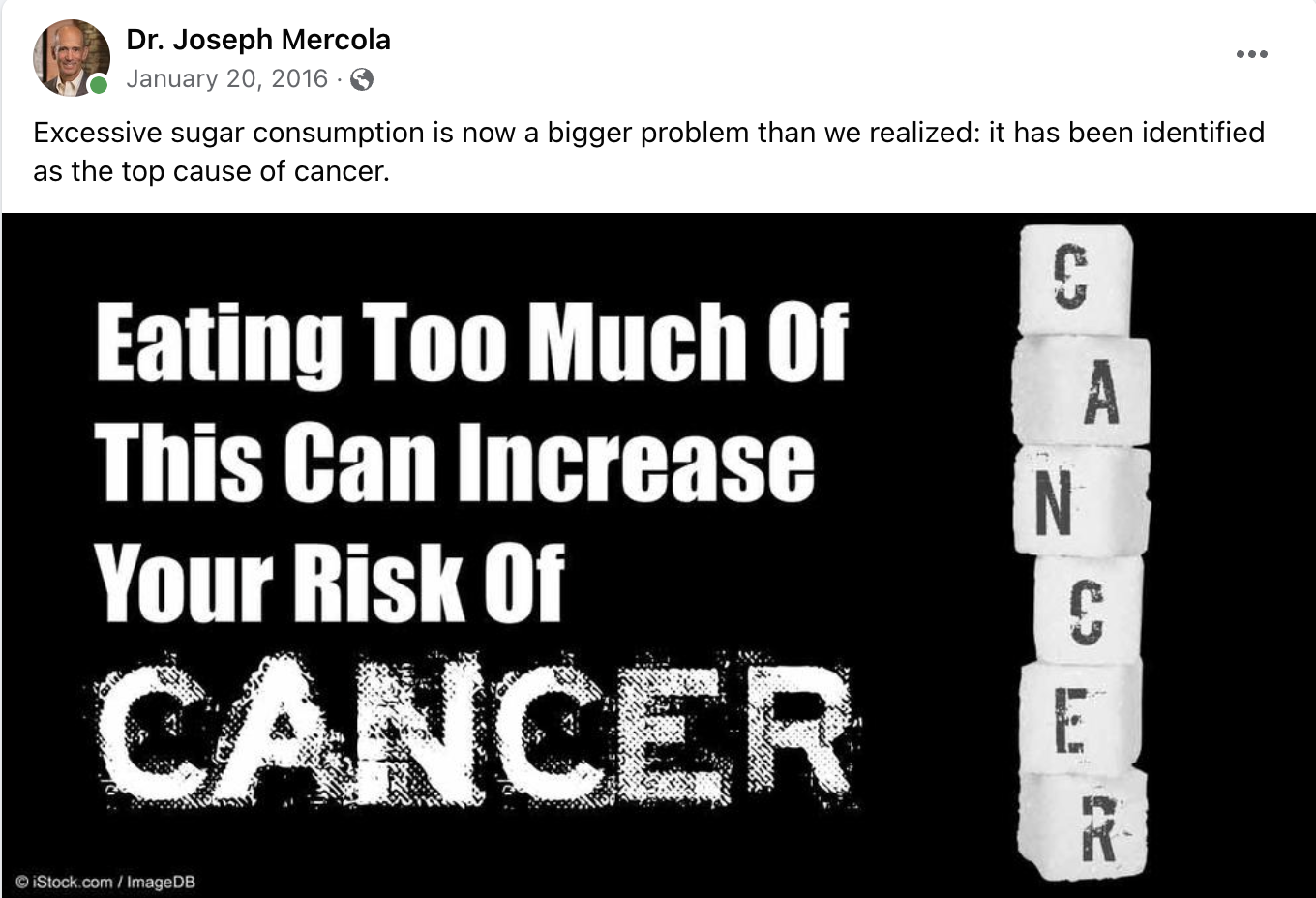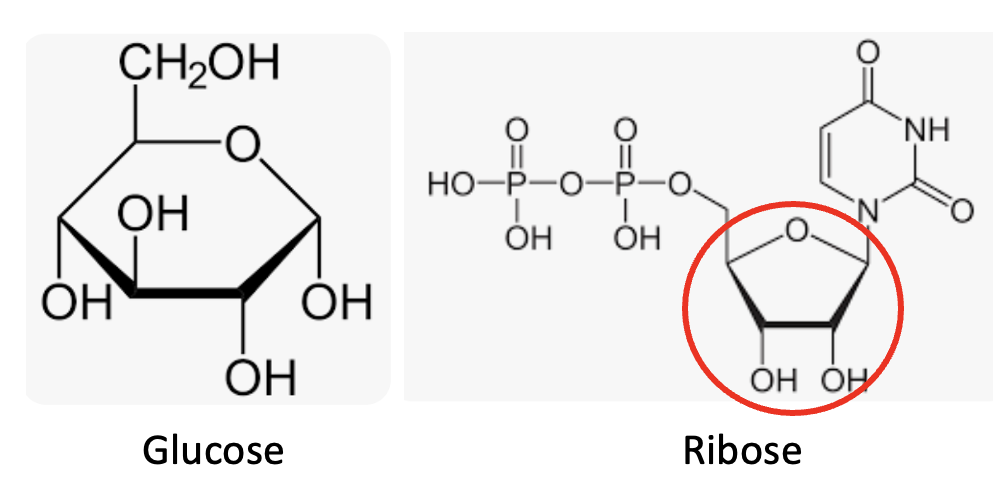Just because Joe "Crazy Joe" Mercola, perhaps the number one purveyor of health misinformation on the Internet, says something doesn't necessarily make it wrong, but it's a bet I'll take any day. For example, it is now well-accepted that sugar neither causes nor promotes cancer, and once again, Mercola doesn't disappoint:

Joe "Crazy Joe" Mercola on Facebook. January 2016. Wrong, as usual.
A new study in the journal Nature identifies a mechanism in pancreatic cancer cells that may explain why starving cancer cells of sugar fuel is a fool's mission. It's because cancer cells are perfectly willing to switch to another fuel source – uridine (Figure 1).

Figure 1. (L) Glucose, the primary fuel of the body. (R) The chemical structure of uridine diphosphate, an alternate fuel for pancreatic cancer cells. Note that uridine diphosphate contains ribose, which is similar to glucose.
The authors state:
Given that glucose availability influences the use of uridine-derived ribose, we hypothesized that a glucose-depleted microenvironment triggers [pancreatic cancer cells] to upregulate UPP1 [the gene that makes an enzyme that breaks down uridine] as a compensatory response. Indeed, the removal or reduction of glucose in the medium induced a strong increase in UPP1 expression (1)
Nwosu, Z.C., Ward, M.H., Sajjakulnukit, P. et al. Uridine-derived ribose fuels glucose-restricted pancreatic cancer. Nature (2023). https://doi.org/10.1038/s41586-023-06073-w

Figure 2. Gene expression of four pancreatic cancer cell lines under different conditions. Don't even try to understand this. See Figure 3 instead.

Figure 3. The growth of one pancreatic cancer cell line (yellow arrow in Fig. 2) in the absence and presence of specific nutrients. RMA (2) (y-axis) is an indirect measure of cell growth. Column 1 shows RMA in the absence (minus sign, red circle) of glucose, uridine, and ribose. Column 2 shows uridine only (plus sign). Column 3 shows glucose. Columns 4,5 and 6 show RMA at different concentrations of ribose. Interpretation: Pancreatic cancer cells grow poorly in the absence of all three nutrients but they do well in the presence of uridine and also high concentrations of ribose.
What this means
The authors used sophisticated techniques to demonstrate that when cancer cells are deprived of their primary fuel they switch to others. The study identifies a mechanism that adds to the understanding of the growth of cancer cells, possibly offering a pathway to novel therapies to impact the cell growth of this deadly cancer.
The ability of cancer to switch to alternative nutrients has fascinated me for a long time. Blocking such compensatory switches could lead us to new treatments and that's the door we hope this study will open.
Zeribe Nwosu, Ph.D (one of the authors)
NOTES:
(1) Put more simply, when glucose is absent the cancer cells sense this, resulting in upregulation of the gene (UPP1). UPP1 codes for (synthesizes) the enzyme uridine phosphorylase (UP), also known as uridine-uracil phosphoribosyltransferase, which is responsible for the metabolic breakdown of uridine, a process that generates energy-rich metabolites that the cells can use.
(2) ChatGPT: "In cellular assays, RMA commonly stands for "Relative Mean Activity." RMA is a statistical measure used to quantify and compare the activity or response of cells in different experimental conditions."




